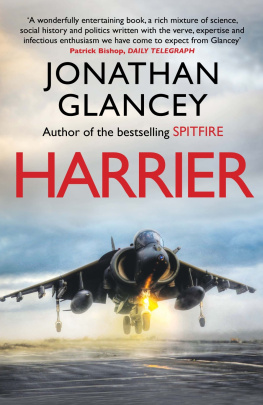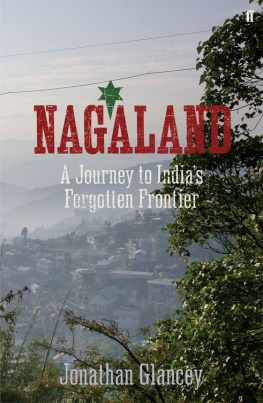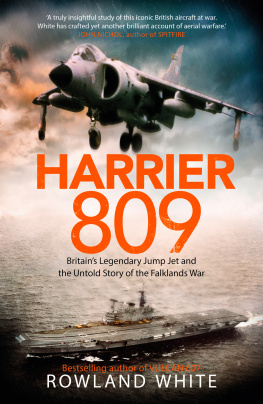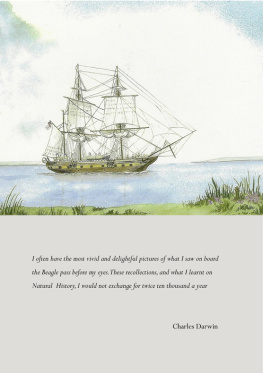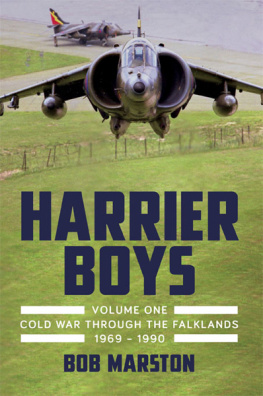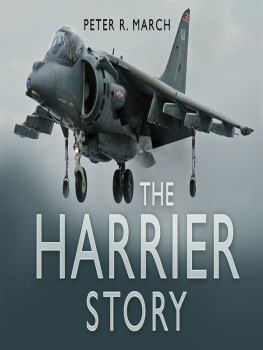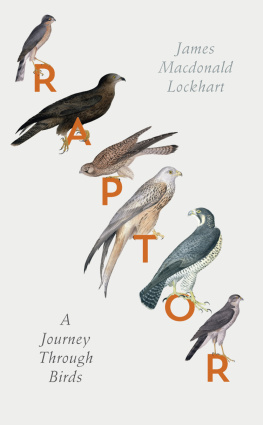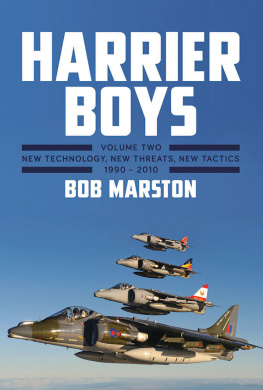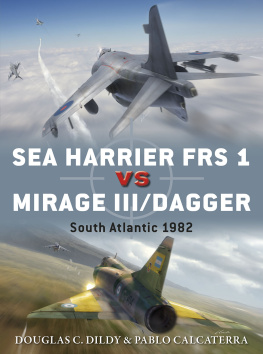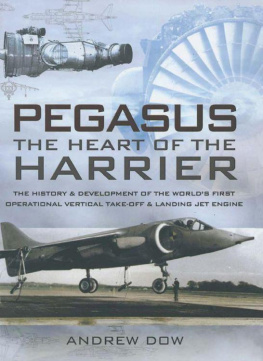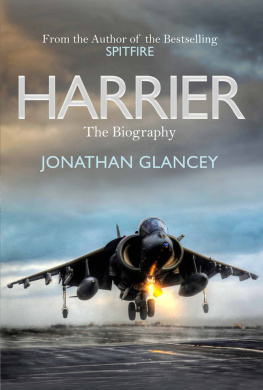HARRIER

Published in hardback in Great Britain in 2013 by Atlantic Books,
an imprint of Atlantic Books Ltd.
Copyright Jonathan Glancey, 2013
The moral right of Jonathan Glancey to be identified as the author of this
work has been asserted by him in accordance with the Copyright, Designs
and Patents Act of 1988.
All rights reserved. No part of this publication may be reproduced, stored in
a retrieval system, or transmitted in any form or by any means, electronic,
mechanical, photocopying, recording, or otherwise, without the prior
permission of both the copyright owner and the above publisher of this book.
Every effort has been made to trace or contact all copyright holders.
The publishers will be pleased to make good any omissions or rectify
any mistakes brought to their attention at the earliest opportunity.
Extract from Spirit of the Air MOD Crown Copyright 2006.
Extracts from Now and Then and You Love that England by C. Day-Lewis,
in Collected Poems (London: Enitharmon Press, 2004).
10 9 8 7 6 5 4 3 2 1
A CIP catalogue record for this book is available from the British Library.
Hardback ISBN: 9781843548911
E-book ISBN: 9781782394433
Printed in Great Britain
Atlantic Books
An Imprint of Atlantic Books Ltd
Ormond House
2627 Boswell Street
London
WC1N 3JZ
www.atlantic-books.co.uk
CONTENTS
The airplane wont amount to a damn until they get a machine that will act like a hummingbird, go straight up, go forwards, go backwards, come straight down and alight like a hummingbird.
Thomas Alva Edison
All modern aircraft have four dimensions: space, length, height and politics.
Sir Sydney Camm, Hawker Aircraft
LIST OF ILLUSTRATIONS
PREFACE
The weather was hostile. Blustery. Ice-cold winds. Grey skies barely visible through banks of low cloud. Conditions, in fact, that would have been all too familiar to the pilots of the Royal Navy and Royal Air Force who flew to victory in the Falklands War nearly thirty years earlier. As some two thousand military personnel, their families and friends and not forgetting the media stared into the unforgiving sky, sixteen Harrier jump jets, in diamond formation, each of four aircraft, thundered towards RAF Cottesmore to land, vertically, and to shut off their engines simultaneously. But not before one of these GR.9A Harriers the final development of this legendary military aircraft, painted for the occasion in glossy retro camouflage stopped in midair, turned to the control tower, and, landing light blazing, made a deep and courtly bow to those assembled below and, by extension, to everyone who, one way or another, had been a part of the story of the Harrier over the previous half-century.
That aircraft was ZG506, flown by Group Captain Gary Waterfall, commander of Joint Force Harrier, controlling Harrier squadrons of the Royal Air Force and the Fleet Air Arm (Royal Navy), and the last station commander of RAF Cottesmore, which itself was closed shortly after this final, highly emotive flight of Britains jump-jet force. That afternoon 15 December 2010 the sixteen jets had flown low in homage, and as a farewell, over the RAF bases of Cranwell, Coningsby, Marham, Scampton, Waddington and Wittering, with their ghosts of Spitfires, Dambusters, Cold War V-bombers, Phantoms and generations of officer cadets earning their wings. They flew, too, above the still-handsome town centres of Stamford and Oakham and over the soaring medieval towers of Lincoln Cathedral before returning to their Rutland base, by now wreathed in eerie and ever-shifting tendrils of low rolling mist.
As the Rolls-Royce engines of the pugnacious jets span on cue to a collective stop, and a haunting silence, those gathered on the ground or clambering from cockpits knew all too well that this was truly the end of an era. The Harrier had been in service with the RAF for forty-one years, and in action, from the Falklands War to the most recent missions in Afghanistan. The Harrier was a development of the Hawker P.1127, the worlds first successful vertical take-off and landing (VTOL) aircraft. On the drawing board in 1957, the revolutionary P.1127 made its maiden flight on 19 November 1960; one way or another, the jump jet born and nurtured in Kingston upon Thames, Surrey spanned half a century in the service of the country that invented and manufactured this magnificent flying machine a fighter aircraft that, perhaps justly, has been dubbed the jet-age Spitfire. It is a machine the product of an optimistic new Elizabethan age when British design, technology, engineering and aircraft not only matched but led the world, if only for what proved to be an unduly brief time that has spanned my life, too. As much an emotion as a brilliant invention and a finely resolved and hugely characterful machine, the Harrier ranks in the pantheon of the worlds greatest aircraft.
Now, out of the blue, one of the worlds most potent and proven combat aircraft was to be taken out of service to save the British government some 900 million. That decision had been announced to Parliament on 12 October 2010, shortly before the fiftieth anniversary of the P.1127s first hover, as a result of the latest Strategic Defence and Security Review. The effect of the cuts was immediate. The following month, the aircraft carrier HMS Ark Royal, like her sister ship Invincible another victim of the latest round of government spending cuts, made a final voyage with Harriers on board, from Tyneside, where she was built, and launched in 1981, to Hamburg.
On 24 November, four Harriers, led by Lieutenant Commander James Blackmore, blasted off the ships deck on a flight to RAF Cottesmore. This would be the last time a British military aircraft would operate from a carrier. A replacement carrier, HMS Queen Elizabeth, and the supersonic Lockheed Martin short take-off and vertical landing (STOVL) F-35B stealth jets she is meant to take to sea, will not be ready for active service until 2020. Watching the Harriers abandon their floating nest, the Ark Royals skipper, Captain Jerry Kyd, said it was like taking the teeth from a tiger, while General Sir David Richards, Chief of the Defence Staff, noted in a decidedly low-key manner that the decision to decommission the Ark Royal had provoked an understandable emotional response.
Understandable and emotional? Certainly. And besides, by axing both such a formidable fighting machine as the Ark Royal and the seventy-nine-strong Harrier force, Britain had deliberately opened a gaping hole in its defence strategy. The ever-controversial Commander Nigel Sharkey Ward, who had led Sea Harriers to victory from the deck of HMS Invincible in spectacular style in 1982, and whom we will meet again in this book, told the British media:
The connived withdrawal of the Harrier from service is an appalling miscarriage of justice, and of operational wisdom; the reprehensible actions of those who contrived this as a logical operational decision must be condemned as disloyal and against the direct interests of our national defence capability.
To make matters seem much worse than they were, the perfectly serviceable, and saleable, Ark Royal was sold, like Invincible before her, for scrap to Leyal Ship Recycling, a Turkish company on the Aegean coast, while the Harriers were flogged off, at bargain-basement price, to the US Marine Corps to be broken up for spare parts for the Americans highly prized AV-8B Harrier II force. In 2013, these Harriers are still active in Afghanistan, and the Marines intend to hang on to them until 2030 if they possibly can.

